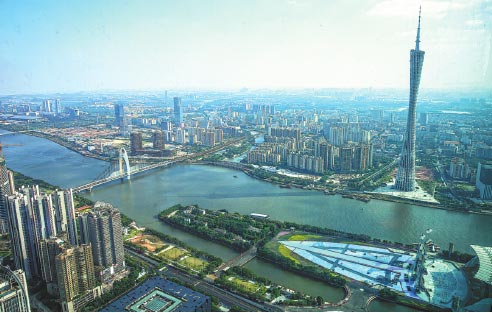 |
|
A view of Canton Tower in present-day Guangzhou, capital of South China's Guangdong province, through which the Pearl River flows. [Photo provided to China Daily]
|
Memories of a trade best forgotten
Present-day Guangdong, among China's most affluent provinces, was the only gateway through which foreign traders could do business for a period in late imperial China.
Known then as Canton, it was also the site of the opium wars in the 19th century. But today it betrays nothing of that battle-scarred past.
Its capital Guangzhou recently held the 122nd edition of the Canton Fair, the largest and oldest trade fair in China, which the city has been hosting biannually since 1957.
While an enclave for foreign merchants in the Thirteen Hongs area was burned down in the years of conflict, the history of the opium trade is laid out in the form of exhibits at three museums: the Thirteen Hongs Museum in Guangzhou, the Opium War Museum and the Sea Battle Museum, both in Humen, a nearby bustling port town on the Pearl River.
The exhibits include scientific and romantic descriptions of poppy flowers from which opium is made; Qing Dynasty royal edicts asking British ships to only dock at a designated harbor in Canton and not sail to other parts of China; names of the Chinese Hong (monopoly group) merchants who would collect tariffs from foreign ships; models of British artillery used in the wars in contrast to the more primitive Qing guns; photos of opium-processing units of the British East India Company; and images of smoky "opium dens" in China where people lay with a dazed look in their eyes.

